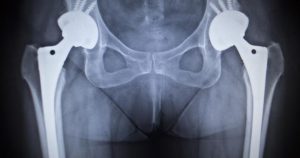Each year more than 332,000 hip replacement surgeries are performed in the United States. These hip replacement surgeries are often performed in response to osteoarthritis that weakens the hip bone overtime. The surgery involves removing parts of the hip bone and replacing them with prosthetics, which usually last up to 20 years, thus making it highly likely that a young patient will have to go through the surgery again. It is much more difficult to replace a worn out prosthetic, which can cause significant damage to the rest of the bone; therefore, there is a need for an alternative to hip replacement that can survive for longer. The solution may have come from a team of researchers from Washington University School of Medicine in St. Louis who have used stem cells to grow new cartilage.
The cartilage has been grown over a synthetic scaffold that can be molded into the shape of the person’s hip. The implant can tolerate weight up to 10 times the patient’s weight and has a longer life than a traditional hip replacement prosthetic. One of the reasons for a longer life-span is because the stem cells used to generate the cartilage were transformed with a gene that allows the cartilage to produce anti-inflammatory factors when induced by a specific drug. This is important because it prevents damage to the cartilage and the scaffold when transplanted. Currently, animal trials are in progress but if all goes well, a treatment for osteoarthritis could would reach human testing in 3-5 years.
References:
http://www.medicalnewstoday.com/articles/311761.php
Moutos, F. T. et al. Anatomically shaped tissue-engineered cartilage with tunable and inducible anticytokine delivery for biological joint resurfacing. Proc. Natl. Acad. Sci. U.S.A. 113, E4513–22 (2016).
Article Summary Courtesy: Waleed Khan

